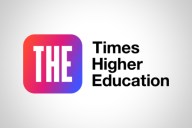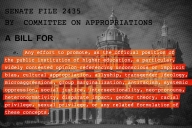You have /5 articles left.
Sign up for a free account or log in.

martinedoucet/E+/Getty Images
A new report found key differences in academic advising at higher ed institutions that narrowed racial and ethnic disparities in graduation rates. Advisers at those institutions, compared to institutions where disparities widened, typically had lower advising caseloads, greater use of advising technologies and more access to student data.
The report, released today by Tyton Partners, an investment banking services and strategy consultancy for education institutions, uses a new methodology to calculate equity gaps in academic outcomes. It measures gaps at colleges or universities by comparing the graduation rates of Black, Latino and Indigenous students to the average graduation rate for all students within a particular sector of higher education, such as community colleges or public four-year universities, over the course of a decade, from 2010 to 2020. This approach diverges from a more common method of measuring equity gaps by comparing minority groups’ outcomes to white students’ outcomes.
Catherine Shaw, a director at Tyton Partners and a primary author of the report, said an advantage of “reframing” the outcome gap is that minority-serving institutions aren’t “left out of the conversation.”
Many minority-serving institutions don’t have enough white students such that a comparison between minority students and white students would be a useful metric, but these institutions “really do have an important role to play in closing outcome gaps nationally,” she said.
Estela Bensimon, university professor emerita and founder of the Center for Urban Education at the University of Southern California, said in an email that she appreciates that the report doesn’t “make white students the norm,” which she called a “promising practice.” She said the distinction drawn between institutions whose gaps are narrowing gaps and those whose gaps are widening also “should help policymakers, practitioners, leaders see that racial inequity in outcomes are not inevitable and irreversible.”
The report drew on responses from 2,000 advisers, faculty members and administrators representing 1,022 colleges, including 136 Hispanic-serving institutions and 38 historically Black colleges and universities. The responses were used to gauge the differences between institutions with shrinking or widening equity gaps in terms of their advising and support services, comparing factors such as available advising technology, adviser caseloads and the student data available to academic advisers.
There was a “huge variety” of institution types in both categories, Shaw said. “There are small schools, large schools, two-year, four-year—there was not a consistent pattern as you might expect. You might think, ‘The well-resourced institutions will of course make gains.’ That wasn’t true. It was all over the map. That surprised me, and I found it also encouraging.”
However, the authors did find differences in academic advising practices that they believe carry valuable lessons for campuses trying to close equity gaps.
At community colleges in particular, institutions that successfully narrowed equity gaps had advisers managing significantly lower caseloads than at institutions where gaps grew.
More than two-thirds of advisers, for whom advising students is their primary role, manage a caseload of more than 150 students. The report argues that advisers with higher caseloads have less time to spend with individual students, and caseload also affects whether new advising strategies and policies can be scaled. For example, colleges and universities where advisers had higher caseloads were less likely to make advising mandatory for students because of a lack of capacity.
“Dilemma: If advising is not required, and many students never interact with an academic advisor, how can the claim be made that academic advising influences and impacts institutional metrics like retention and completion?” Wendy Troxel, director of the National Academic Advising Association Center for Research at Kansas State University, said in the report.
The report also notes that academic advisers often lack specific knowledge and data about their students. Of the advisers surveyed, 37 percent didn’t know the financial need of students in their caseload, and 52 percent didn’t know if students identified as Indigenous. Colleges and universities where outcome gaps widened for minority students were less likely to have demographic information readily available to advisers. Institutions where at least 60 percent of the student body received the Pell Grant, financial aid for low-income students, and minority-serving institutions had this information available at higher rates.
Shaw also noted that most providers of student support services are white women, so ensuring they know more about the specific needs of their students is especially important.
Black, Latino and Indigenous students “come in with a different lived experience, many different paths to college than the people who are advising them,” Shaw said. “You’re talking about the ability of those support providers to serve an increasingly diverse set of paths to college, and you’re asking folks to live outside your lived experience in ways you probably can’t imagine. They may need training or other ways to think about things so that students feel comfortable talking to them about these aspects.”
Shaun Harper, executive director of the University of Southern California Race and Equity Center, said the possibility that implicit biases among advisers may “exacerbate or cyclically reproduce racial disparities in student success outcomes” went largely unexplored in the report. He noted that the word “racism” only appears once in the 35-page report and the word “racist” not at all.
“Until and unless the role that racist institutional histories, mind-sets, cultures, policies, curricula and practices play in student success are explicitly named and rigorously explored, remedies will continue to be incomplete,” Harper said.
Bensimon agreed.
“The fact that the majority of advisers are white women is a problem, particularly if they lack racial literacy and … the knowledge to understand how racialization plays out in advising practices,” she said. “They may believe that advising is advising is advising and not realize that practices they see as race neutral are in fact harmful to racially minoritized students.”
Shaw noted that white and nonwhite advisers didn’t have “statistically significant differences” in their responses to survey questions.
“I’m a little cautious about raising concerns around implicit biases in the student support staff because … folks come into this work with the intention to serve and to help,” she said. The research didn’t point to implicit biases as an issue, “but we’re not 100 percent encompassing on how the advisers and student support teams operate.”
Larger institutions, with about 5,000 students or more, that successfully shrank outcome gaps also had wide-scale use of certain kinds of technology to help advisers, including software for caseload management, according to the report. Notably, larger institutions that narrowed their outcome gap for Black and Latino students were more likely to have scaled “integration technologies”—technology that can help institutions better share data and establish clear lines of communication between different offices related to student support, such as financial aid and student advising.
Shaw pointed out that no matter how high quality academic advising services are, they only work if colleges and universities can get students to use them. Advisers pointed to “limited understanding of student needs” and “low student engagement” as the most significant barriers to improving student advising for Black, Latino and Indigenous students.
“The bigger issue is the students who don’t show up,” Shaw said. “I do think engaging the populations we’re seeking to improve outcomes for is something the entire ecosystem needs to work to address … If students aren’t coming in because they don’t think that advisers or support providers understand them, how do we engage them? What are the other channels?”









